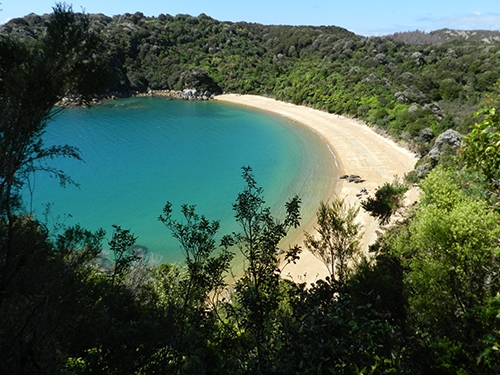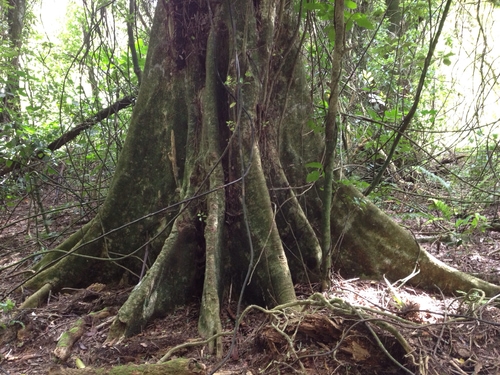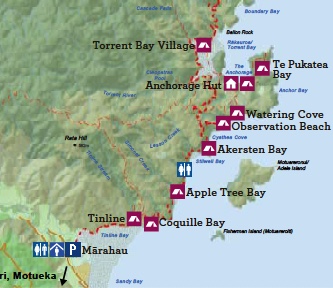By Dr. Philip Simpson
Te Pukatea (both the bay and the roadstead) was probably named for the pukatea trees that grow in the swamp there, the bay being a shelter for waka, and pukatea being a timber favoured for carving the often-damaged prow of a waka.

Image: Te Pukatea Bay – Robert Shurmer/Shutterstock.com
Pukatea is a large tree – one of the largest in New Zealand. It can have an extremely thick trunk, which flares at the base to form narrow buttresses. It has glossy green leaves (puka) and white to grey bark (tea).

image: Pukatea Tree © bbi2
Apart from very rare records on the West Coast and one in Kaikōura, pukatea in the South Island is limited to Nelson and the Marlborough Sounds. Hence it is a special plant here, and this may explain why several bays and streams are named after it in this region. Pukatea is regarded as one of the rare swamp-forest species in New Zealand and shares this distinction with kahikatea. They often grow together. In the park swamps are limited in extent, usually forming at river mouths behind a sand bar. Consequently, pukatea is quite rare, although widely distributed. A fine stand can be seen along the Pukatea Walk at Tōtaranui. Small groups of pukatea stand in most of the larger gullies all along the coast and, now that fire and bush clearance have ceased, young pukatea are increasingly common.

Te Pukatea Bay is on the western side of Pitt Head
Te Pukatea Bay is named after this tree; a few remain there today, growing with kahikatea. A former name for the Astrolabe Roadstead was Pukatea. The roadstead is a haven for boats, as D’Urville found out; it was the same for waka, and the bays along it would have been places where waka were both made and repaired.
The key link is in the pukatea wood. Whereas most waka were fashioned from totara, which was durable in water and relatively easy to carve, the front portion of a large waka taua (war canoe) was usually made from pukatea. This portion, the tauihu, was elaborately carved and represented all the atua (gods) involved with creation. But as the prow, it also needed to be very strong. Pukatea wood has the perfect qualities; it is soft for elaborate carving, light in weight (and therefore does not weigh the bow down) but it is durable in water, strong and, unlike tōtara, not brittle – it dents when impacted. Hence it was used, when available, to create not only deep spiritual images but also a weapon, a ram.
Pukatea had other values to Māori. The inner bark (which contains pukateine, a powerful alkaloid analgesic) was used to cure skin diseases, to soothe the digestive tract and to ease tooth ache.
